1. Kim HC, Cho SMJ, Lee H, Lee HH, Baek J, Heo JE, et al. Korea hypertension fact sheet 2020: analysis of nationwide population-based data. Clin Hypertens. 2021; 27:8. PMID:
33715619.

2. Lee HY, Shin J, Kim GH, Park S, Ihm SH, Kim HC, et al. 2018 Korean Society of Hypertension Guidelines for the management of hypertension: part II-diagnosis and treatment of hypertension. Clin Hypertens. 2019; 25(1):20. PMID:
31388453.

3. Kim HL, Lee EM, Ahn SY, Kim KI, Kim HC, Kim JH, et al. The 2022 focused update of the 2018 Korean Hypertension Society Guidelines for the management of hypertension. Clin Hypertens. 2023; 29(1):11. PMID:
36788612.
4. Williams B, Mancia G, Spiering W, Agabiti Rosei E, Azizi M, Burnier M, et al. 2018 ESC/ESH Guidelines for the management of arterial hypertension. Eur Heart J. 2018; 39(33):3021–3104. PMID:
30165516.

5. Whelton PK, Carey RM, Aronow WS, Casey DE Jr, Collins KJ, Dennison Himmelfarb C, et al. 2017 ACC/AHA/AAPA/ABC/ACPM/AGS/APhA/ASH/ASPC/NMA/PCNA guideline for the prevention, detection, evaluation, and management of high blood pressure in adults: a report of the American College of Cardiology/American Heart Association Task Force on Clinical Practice Guidelines. J Am Coll Cardiol. 2018; 71(19):e127–e248. PMID:
29146535.
6. SPRINT Research Group. Wright JT Jr, Williamson JD, Whelton PK, Snyder JK, Sink KM, et al. A randomized trial of intensive versus standard blood-pressure control. N Engl J Med. 2015; 373(22):2103–2116. PMID:
26551272.

7. Karnjanapiboonwong A, Anothaisintawee T, Chaikledkaew U, Dejthevaporn C, Attia J, Thakkinstian A. Diagnostic performance of clinic and home blood pressure measurements compared with ambulatory blood pressure: a systematic review and meta-analysis. BMC Cardiovasc Disord. 2020; 20(1):491. PMID:
33225900.

8. Pappaccogli M, Di Monaco S, Perlo E, Burrello J, D’Ascenzo F, Veglio F, et al. Comparison of automated office blood pressure with office and out-off-office measurement techniques. Hypertension. 2019; 73(2):481–490. PMID:
30624994.

9. Roerecke M, Kaczorowski J, Myers MG. Comparing automated office blood pressure readings with other methods of blood pressure measurement for identifying patients with possible hypertension: a systematic review and meta-analysis. JAMA Intern Med. 2019; 179(3):351–362. PMID:
30715088.

10. Kollias A, Stambolliu E, Kyriakoulis KG, Gravvani A, Stergiou GS. Unattended versus attended automated office blood pressure: Systematic review and meta-analysis of studies using the same methodology for both methods. J Clin Hypertens (Greenwich). 2019; 21(2):148–155. PMID:
30585383.

11. Kim S, Park JJ, Lee SA, Cho Y, Yoon YE, Oh IY, et al. Diagnostic accuracy of manual office blood pressure measurement in ambulatory hypertensive patients in Korea. Korean J Intern Med. 2018; 33(1):113–120. PMID:
28602060.

12. Seo J, Lee CJ, Oh J, Lee SH, Kang SM, Park S. Large discrepancy between unobserved automated office blood pressure and ambulatory blood pressure in a high cardiovascular risk cohort. J Hypertens. 2019; 37(1):42–49. PMID:
30507862.

13. Bauer F, Seibert FS, Rohn B, Bauer KA, Rolshoven E, Babel N, et al. Attended versus unattended blood pressure measurement in a real-life setting. Hypertension. 2018; 71(2):243–249. PMID:
29255074.

14. Filipovský J, Seidlerová J, Ceral J, Vysočanová P, Špác J, Souček M, et al. A multicentre study on unattended automated office blood pressure measurement in treated hypertensive patients. Blood Press. 2018; 27(4):188–193. PMID:
29334262.

15. Andreadis EA, Geladari CV, Angelopoulos ET, Savva FS, Georgantoni AI, Papademetriou V. Attended and unattended automated office blood pressure measurements have better agreement with ambulatory monitoring than conventional office readings. J Am Heart Assoc. 2018; 7(8):e008994. PMID:
29627767.

16. Fonseca-Reyes S, Fonseca-Cortés K, Coca A, Romero-Velarde E, Pérez-Molina J. Conventional office blood pressure measurements and unattended automated office blood pressure compared with home self-measurement and 24-h ambulatory blood pressure monitoring. Blood Press Monit. 2023; 28(1):59–66. PMID:
36606481.

17. Asayama K, Ohkubo T, Rakugi H, Miyakawa M, Mori H, Katsuya T, et al. Comparison of blood pressure values-self-measured at home, measured at an unattended office, and measured at a conventional attended office. Hypertens Res. 2019; 42(11):1726–1737. PMID:
31222188.

18. Myers MG, Valdivieso M, Chessman M, Kiss A. Can sphygmomanometers designed for self-measurement of blood pressure in the home be used in office practice? Blood Press Monit. 2010; 15(6):300–304. PMID:
20975533.

19. Lamarre-Cliché M, Cheong NN, Larochelle P. Comparative assessment of four blood pressure measurement methods in hypertensives. Can J Cardiol. 2011; 27(4):455–460. PMID:
21801977.

20. O’Shaughnessy MM, Durcan M, Kinsella SM, Griffin MD, Reddan DN, Lappin DW. Blood pressure measurement in peritoneal dialysis: which method is best? Perit Dial Int. 2013; 33(5):544–551. PMID:
23547279.

21. Hänninen MR, Niiranen TJ, Puukka PJ, Mattila AK, Jula AM. Determinants of masked hypertension in the general population: the Finn-Home study. J Hypertens. 2011; 29(10):1880–1888. PMID:
21841499.
22. Ihm SH, Park JH, Kim JY, Kim JH, Kim KI, Lee EM, et al. Home blood pressure monitoring: a position statement from the Korean Society of Hypertension Home Blood Pressure Forum. Clin Hypertens. 2022; 28(1):38. PMID:
36180964.

23. Kim HJ, Shin JH, Lee Y, Kim JH, Hwang SH, Kim WS, et al. Clinical features and predictors of masked uncontrolled hypertension from the Korean Ambulatory Blood Pressure Monitoring Registry. Korean J Intern Med. 2021; 36(5):1102–1114. PMID:
34134467.

24. Kim YM, Ohn DW, Kim SH, Kim DH, Park SM, Cho IJ, et al. Direct comparison of an automated oscillometric device with an electronic auscultatory device for epidemiologic survey to evaluate the prevalence of hypertension. Medicine (Baltimore). 2022; 101(50):e32299. PMID:
36550921.

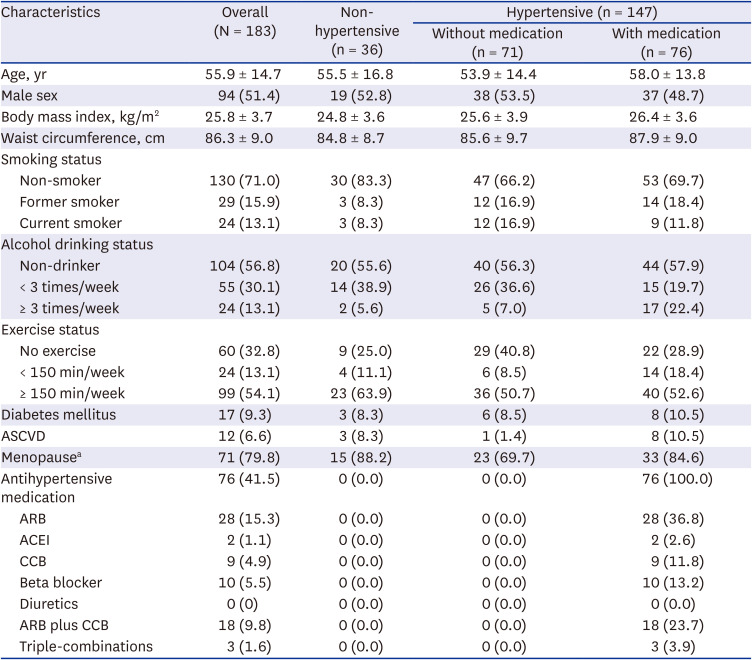
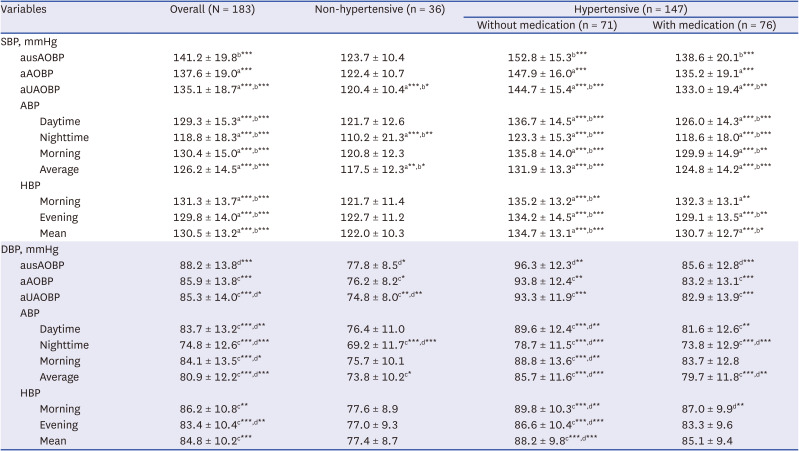
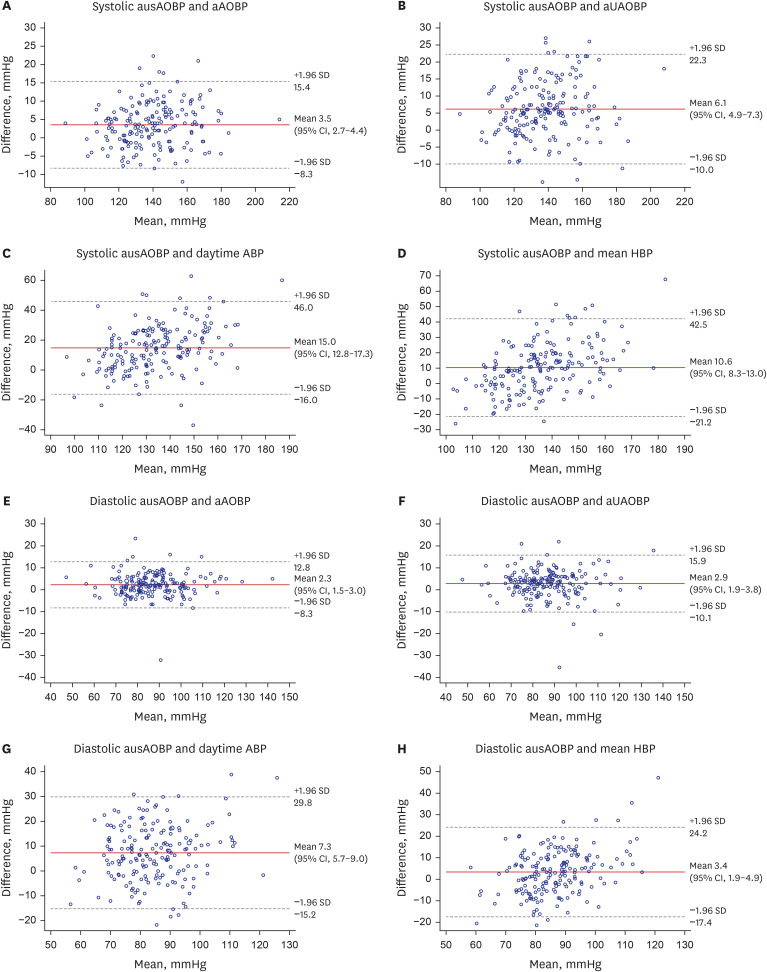


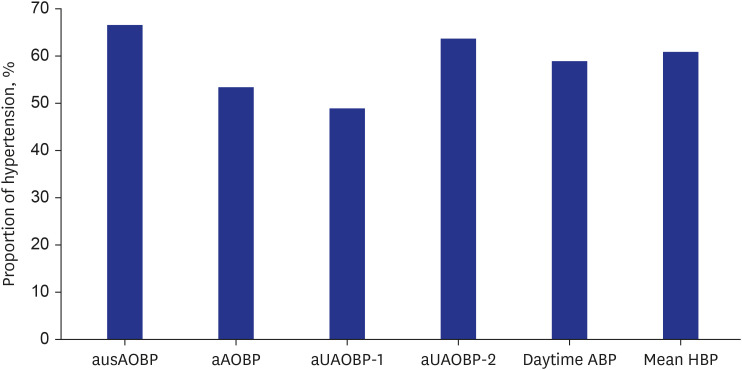
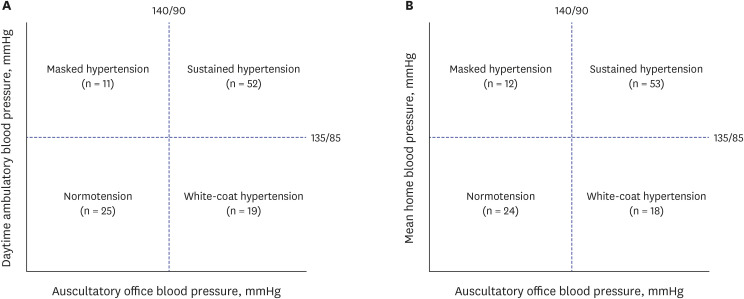




 PDF
PDF Citation
Citation Print
Print



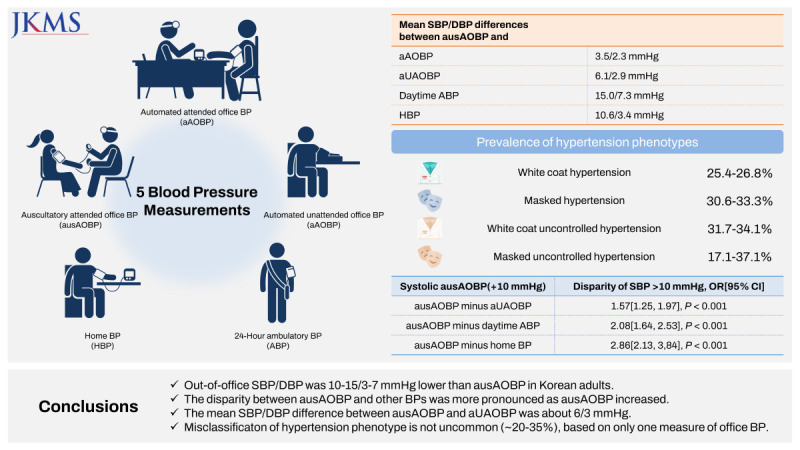
 XML Download
XML Download